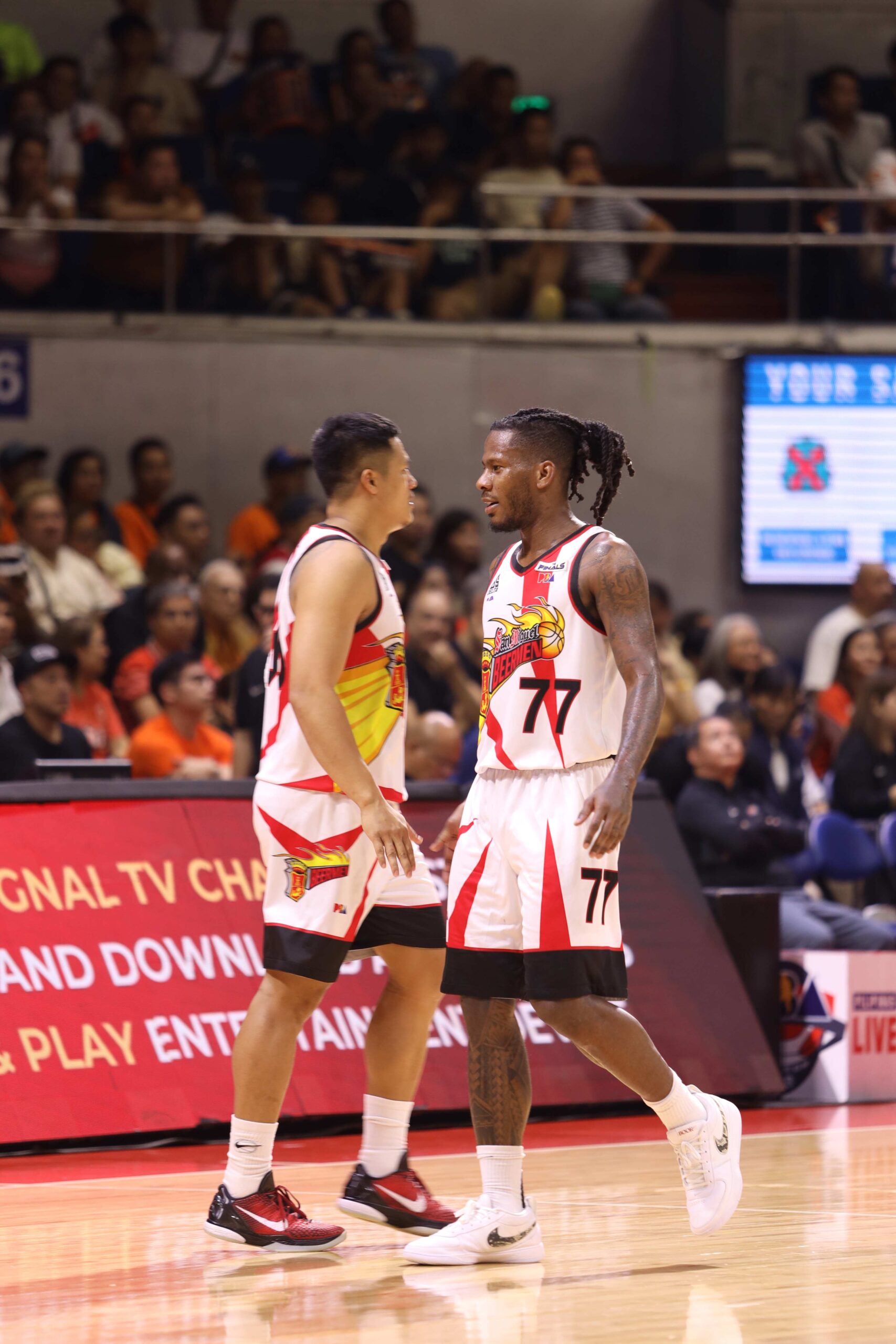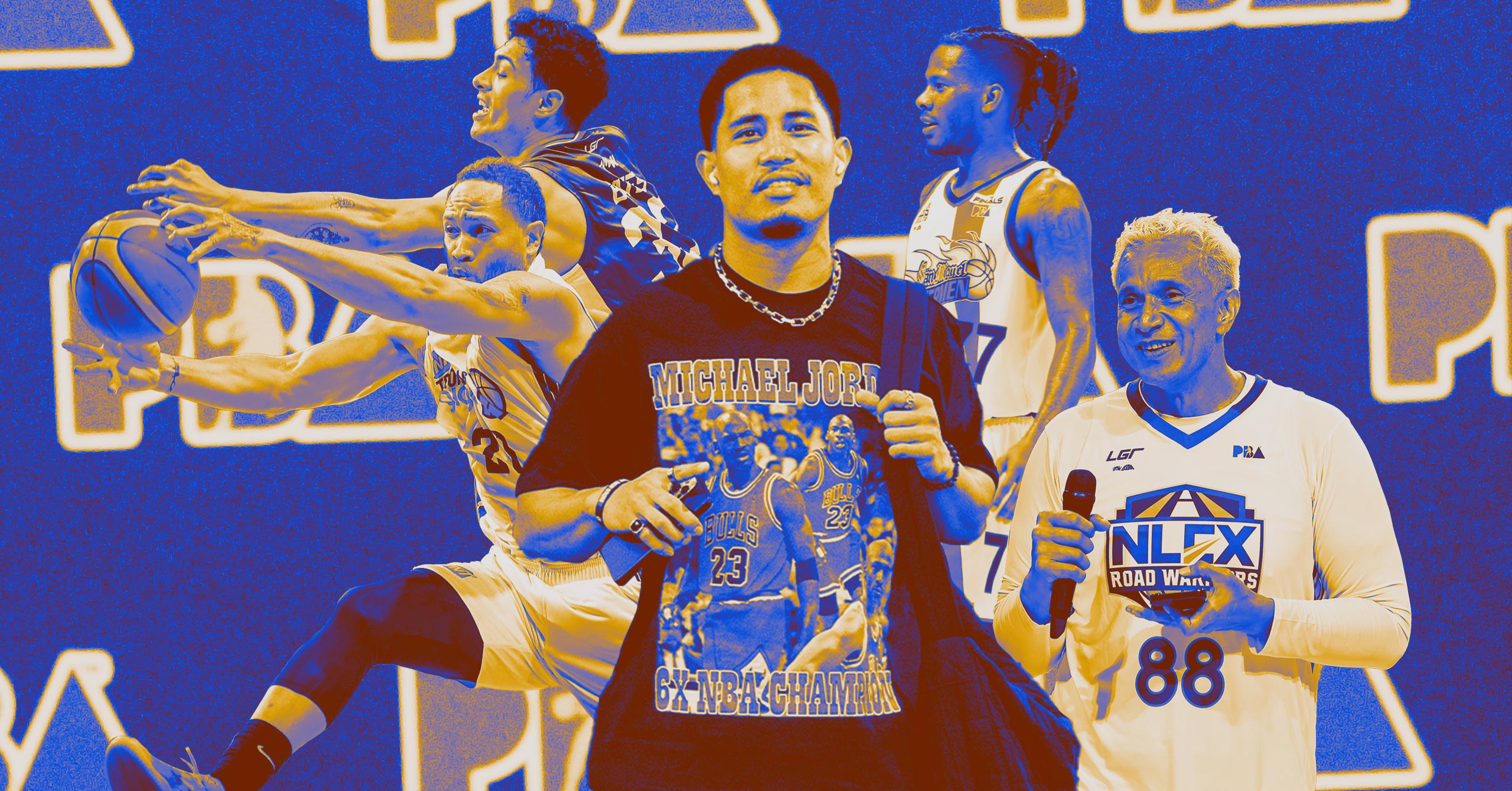The recent relegation of an SMB player to the team’s reserve list has shone a spotlight on an archaic PBA rule.
Last August 29th, San Miguel Beermen guard Simon Enciso posted something on his X account, calling the PBA’s Fil-foreign rule “crazy” and asking why it was even a rule.
For context, Enciso was referring to an existing PBA rule that limits each team to only seven players who are considered “Fil-foreigners.”
Ever since the Beermen signed Fil-American Kris Rosales during the offseason, that brought the team past the limit since they already had Enciso, Marcio Lassiter, Mo Tautuaa, CJ Perez, Jericho Cruz, Chris Ross, and rookie Avan Nava. One of these players had to be relegated to a reserve.
In the end, it was Enciso who was picked to sit out the ongoing Season 49 Governors’ Cup. The shooting guard, who was born in California, isn’t happy with the situation but is trying his best to deal with the situation positively.
“It’s a whole rule so it’s going to take some time to get that out,” he told The GAME. “It is what it is. I’m still here for my teammates. Come to every game, come to every practice. Until they’re ready to reactivate me then I’m staying in shape, ready to play.”
How did we get here?
Enciso’s post on X brought the Fil-foreign limit rule back in the spotlight after years of it simply not being an issue. For those not familiar with it, it’s been around since the early 2000s.
Let’s backtrack a bit. In 1999, the league experienced an influx of Fil-foreigners, players of mixed heritage with at least one parent being a Filipino and led by the likes of Asi Taulava, Danny Seigle, and Erik Menk.
It was a response to the growing threat posed by the rival Metropolitan Basketball Association (MBA), whose teams were beefing up their rosters by signing Fil-foreigners. Many of these MBA Fil-foreigners eventually found their way to the PBA – Rafi Reavis, Rudy Hatfield, Alex Crisano, among others — but before they did, the league went on its own hunt for Fil-foreigners to compete with the MBA.

This recruitment war eventually took its toll on the credibility of both leagues, aside from seriously irking local players who felt that many of these newcomers either weren’t really fully invested in the PBA or worse, didn’t even have an ounce of Filipino blood.
Eventually, even the Philippine government got involved, with the Bureau of Immigration cracking down on the so-called “Fil-Shams,” or foreign players with spurious documents that made them appear to have Filipino blood. A number of them were deported, but the damage had been done.
There was an unmistakable divide in the league between the home-growns and the Fil-foreigners, which even spurred one team, the Sta. Lucia Realtors, to boldly declare that they would never sign a Fil-foreigner again after getting burned by Fil-Sham Rob Parker. (The Realtors eventually softened their stance and drafted Kelly Williams no. 1 overall in 2007).
Against this backdrop of dissent from “homegrown” players, the PBA Board eventually decided to limit the number of Fil-foreigners allowed per team to five, aside from setting stringent requirements for future applicants.
Noli Eala, who had a front-row seat to all this drama in the early 2000s first as a commentator then as PBA commissioner for four years, vividly recalls what led to this moment.
“Remember that time when the group of Marlou (Aquino), Kenneth (Duremdes), Jerry Codiñera, they were complaining that, well, one of course, the Fil-sham issue,” he told The GAME.
“And secondly, that there was an increasing number of Fil-Ams. And I think this was an offshoot of that, particularly from a few team owners because, obviously, these are the team owners that could not afford it or also could not find some of these Fil-Americans or Fil-foreigners. So, that was the background of that particular rule.”
According to Eala, there was another reason the league wanted to limit the number of Fil-foreigners. They were concerned that teams would be overrun by players who were hitherto unknown to the viewing public and would have no connection at all to the fans or the Filipino basketball culture.
“Well, of course, (there was) the issue on affinity with the fans,” he explained. “That was the basis of the PBA trying to limit Fil-foreigners in a team. It was always the belief that the locals had more fans from a marketing perspective. And so, we wanted to ensure that there is still a connection to the fan bases of teams.”
So to summarize, the PBA decided to restrict the flow of Fil-foreigners for these reasons: First, the league’s image was clearly damaged by the Fil-sham issue, so going forward they wanted to make sure that only legitimate Fil-foreigners could play. Second, not all teams had the resources to search for and sign up Fil-foreigners. And lastly, having too many unfamiliar players would turn off the fans.
Where do we go from here?
Through the years, the PBA has gradually softened its stance on Fil-foreigners. The limit per team has increased from the original five to the current seven. Plus, the league has waived a number of requirements Fil-foreigners needed to apply, such as clearances from the Department of Justice and the Bureau of Immigration.
But is this enough? In fact, should there still be a limit in the first place if the conditions that gave rise to this rule are no longer present?
“I think (the reduction of requirements) is an indication that the PBA is much more welcoming,” Eala said. “So, I think if they’re encouraging more Fil-Ams to come in, then why are we putting a limit? It doesn’t make sense.”
Given this, Eala thinks the time is ripe for the PBA to revisit the Fil-foreign rule.
“Of course, we know many, many years later that things have changed,” he said. “The circumstances have changed. There is no longer any divide, I would like to think, among the Fil-Ams and the locals.
“In fact, I think because many of the players that are playing in the PBA also have many ties already to institutions. Some of them played in college here. So, that particular scheme of things before where teams would just pluck players from abroad out of the blue, or from thin air, and just bring them to the Philippines is not any more prevalent.
“So, I think things have changed. And certainly, you know, maybe the relationship among the players has really improved. So, if that is the rationale behind that rule before because there was a clamor, then obviously that has changed.”
Perhaps there is also a need to revisit the whole concept of being a “Fil-foreigner” in relation to how it applies to eligibility. The mere fact that there is still a limit to their number is a tacit admission that they are still viewed differently. It’s already the 2020s, and we as a society should already have moved past this.
Enciso himself, in a series of replies to comments on his original post, put it in context: I also have a Philippine passport, so why the differentiation? I worked just as hard to get here.
And he has a point. Why should those players born outside the Philippines be limited in their opportunities and be defined differently? Oh, yes, you guys have Philippine passports, but, you know, there can’t be too many of you or the league might collapse.
If totally scrapping the Fil-foreigner limit is out of the question for now, then perhaps in the short term the league could redefine its classification of a Fil-foreigner. One reason that Enciso was bumped off is because teammates Perez and Cruz were considered “Fil-foreigners.”

Which begs the question: how, exactly, do you qualify as a Fil-foreigner? According to PBA commissioner Willie Marcial, there are two conditions for a player to be classified as such.
“One, hindi dito pinanganak,” Marcial told The GAME. “Isa sa tatay, nanay hindi citizen. Isa lang ang citizen.”
It sounds like that is an application of the letter of the law and not the spirit. Granted, Perez was born in Hong Kong, but he has spent most of his life in Manila and is as Filipino as Balut. Cruz is from Guam and plays for the Guamanian national team in FIBA competitions, but he went to college at Adamson and speaks fluent Tagalog.
The good news is, the league has in fact begun looking into revising or even totally scrapping the rule.
“Pinag-usapan na yan this year,” Marcial said. “Pero nasa table pa lang. Wala pa kung anong gagawin. Kung tatanggalin ba yung rule na yan o papaano. So yun ang mga i-re-revisit. Pinag-aaralan namin ng legal. Pinag-usapan namin last month ng legal.
“Anong magandang gawin diyan? Anong magandang proposal sa board? Okay pa ba yan, o (wala) na? So iyan ang tinitingnan namin. Pero iba na talaga ngayon. Ano na tayo, eh, globalization. So tingnan natin, pinag-aaralan lahat iyan.”
For his part, while he believes the rule should definitely be revisited, Eala thinks there should still be some form of regulation, though not necessarily in terms of a hard cap.
“For me, I think the issue of regulating Fil-foreigners by numbers is a rule that should really be revisited, but it should not be totally unregulated. Because locals are definitely regulated, right? Whatever is applicable to the locals, it should also be applicable to the Fil-foreigners.”
In the meantime, Enciso will continue staying ready, even as he hopes to eventually see an end to the Fil-foreigner rule.
“Yeah, for future Fil-Ams who come out here and play in the PBA. It would be nice. We don’t work super hard to get our paperwork done for nothing. Like I said, it is what it is.”
Banner Images from PBA Media Bureau and Excel Panlaque.
